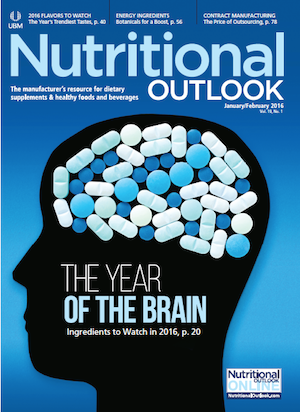2016 Ingredient Trends to Watch for Food, Drinks, and Dietary Supplements: Probiotics
Which emerging markets for probiotics should we keep an eye on?
Photo © iStockphoto.com/fpm

North America and Europe are home to some of the most established probiotic markets in the world, but the real potential for dramatic growth may lie elsewhere. Which emerging markets should we keep an eye on? Latin America and Asia are among the most promising, says George Paraskevakos, executive director, International Probiotics Association (IPA).
Because of the large and still-untapped consumer base in these younger markets, “the growth curve of opportunity is way higher than what you’ll see in a more mature market,” says Paraskevakos. Specifically, he points to Brazil, Mexico, Colombia, China, Japan, South Korea, and possibly Southeast Asia as some of the most interesting hot spots on the radar.
Euromonitor sees promise in many of the same countries. For probiotic yogurt specifically, global growth is being driven by countries like China, which added $1.4 billion in new sales between 2012 and 2014, reported Ewa Hudson, head of health and wellness, Euromonitor International, during her October 2015 SupplySide West presentation “Changing World of Probiotics-Global Market Snapshot.” Probiotic yogurts are also poised for strong growth in Vietnam and Japan, Hudson said, while Italy, Canada, Taiwan, and Japan are key growth markets for probiotic supplements.
In emerging markets, digestive health is usually the first probiotic health area that proves successful in reaching consumers, says Paraskevakos. “It all begins in gut health, and then as the thirst of consumers grows and they start to get used to the consumption of the probiotic and getting past that initial stage of knowing it’s good for your gut, then other [health] areas start to come through,” he explains.
Despite this entry-point similarity, preferences for product type tend to vary wildly. For instance, while probiotic yogurts are growing big in China, probiotic sticks, sachets, and powders perform better in South Korea, Paraskevakos says. And probiotic foods are the predominant choice in South America, although demand for supplements is on the up.
“It’s a very varied industry in terms of how people get their probiotics,” Paraskevakos confirms. “It’s so region- and even country-specific.”
In emerging markets, 2016 may also be big for regulatory issues, primarily because of developments in Europe and the United States that could set the tone around the world. Paraskevakos points to FDA’s impending release of New Dietary Ingredient (NDI) guidance that, when finally released, could change the way regulators treat probiotics in the United States. And in Europe, regulators are expected to offer additional comments on permissible probiotics health claims in the first months of 2016, he says.
“If Europe turns around and makes probiotics pharmaceutical drugs, that’s going to raise flags for other regulators across the world,” Paraskevakos adds.
Yet, as concerning as the regulatory drama in Europe is, it may also be contributing to the rise of new probiotic markets around the globe. Frustrated by limiting regulations in Europe, many probiotic companies are shifting their resources to other parts of the world where they are able to more freely commercialize their products, explains Paraskevakos.
READ NEXT
Ingredients to Watch 2016: Plant Protein
Read more:
Are Probiotics Moving Beyond Gut Health?
Crackdown on Probiotic Health Claims Costs Billions for EU Yogurt Industry
Microbiome and Emerging Research to Unlock Probiotic Mysteries?
Michael Crane
Associate Editor
Nutritional Outlook Magazine
michael.crane@ubm.com

Polyphenols: The next generation of prebiotics is ready for liftoff
April 21st 2025Explore the prebiotic health benefits of polyphenols and the positive impact they may have on digestive and immune health. Polyphenols, such as those found in European black elderberry, may be an ideal solution for manufacturers trying to break into the digestive health space.

























